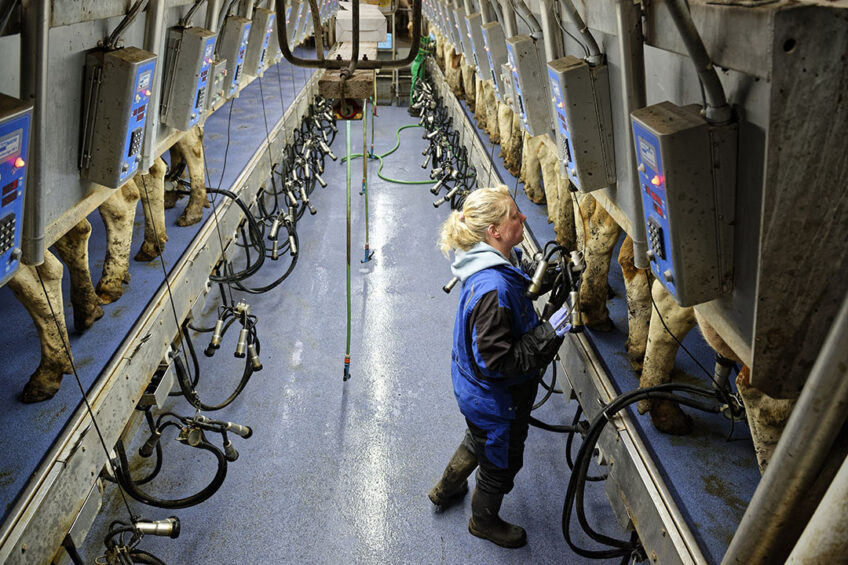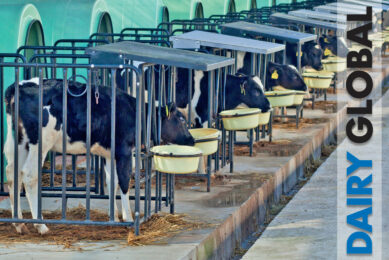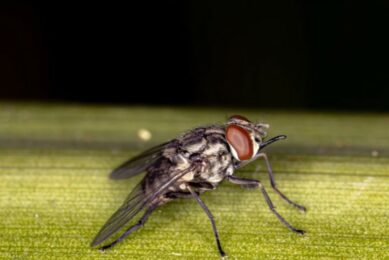Is your winter parlour hygiene routine in place?

As the weather gets colder, common hygiene issues on dairy farms make their way to the forefront. Let’s uncover some good hygiene practices.
Alison Cox, global applications specialist, Deosan said in a recent press release: “Consider your parlour hygiene practices. Don’t be tempted to cut corners; low bactoscans and cell counts make an important contribution to the milk price achieved, so it is in your interest to avoid common mistakes by taking action.”
Over 20% of bactoscan fails can be attributed to insufficient wash temperature. “Carry out a thorough check of the parlour wash process to check that the temperature is sufficient to prevent thermoduric bacteria from surviving and causing issues.

“Initial boiler temperature is crucial as it has a direct impact on the overall circulation cleaning temperature, particularly as we start to experience cooler outside temperatures. So, check the temperatures at the start and at the end of the wash. Ensure the wash is maintained above 55 degrees Celsius for the whole length of circulation and tweak initial boiler and/or initial rinse water temperature if this is not achieved.
Dirtier cows can lead to a deterioration of teat condition and as a result, bactoscans can rise.”
Teat condition
“Don’t overlook teat preparation, as winter housing conditions can present increased hygiene challenges. Be ready to adapt your teat preparation routine to meet the conditions. Whilst simple paper towelling in the summer may be sufficient for your system, there are a number of added challenges at housing, such as a deterioration in weather conditions or possibly pressure on housing facilities, that may require a more robust method of preparation. Remember, dirtier cows can lead to a deterioration of teat condition and as a result, bactoscans can rise.
“Strep.uberis and E.coli are environmental bugs that can cause significant issues with housed animals, particularly if tightly stocked, so you need to review products and ensure they are fit for purpose. The requirements of your products need to move from wide spectrum bacteria control to products that centre around soil removal and rapid disinfection.
 Research: DSCC method a viable tool in mastitis management
Research: DSCC method a viable tool in mastitis management
A study confirms that by looking more closely at the cell distribution in the milk sample, 18% more udder infections can be detected than by looking at SCC alone.
Alison also suggested that farmers should ensure their post-milking teat disinfection is supporting skin condition. “We consistently see deterioration of teat condition at this time of year. It is advised to use up supplies of summer disinfectant, rather than hold it over for the following year, but I recommend having a more suitable product on site to use on cows prone to skin deterioration. This will ensure continuity of teat health and reduce the possibility of outbreaks of mastitis.
Out of the parlour, look at your housing conditions. Do you have a routine in place that keeps all areas clean throughout the housing period? Without attention, this can be a major source of bacteria, as well as resulting in cows entering the parlour dirty.”
“A preventative approach to bacteria is best practice, however, it is ineffective without all staff following the correct protocols. Ensuring everyone knows what is required of them and the reasons why will encourage correct routines to be carried out consistently,” she concluded.
Source and for more info: Deosan
Join 13,000+ subscribers
Subscribe to our newsletter to stay updated about all the need-to-know content in the dairy sector, two times a week.










